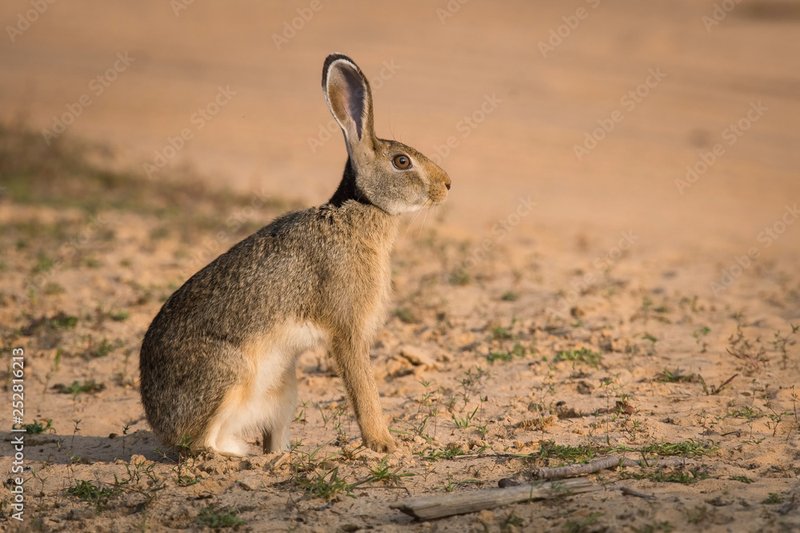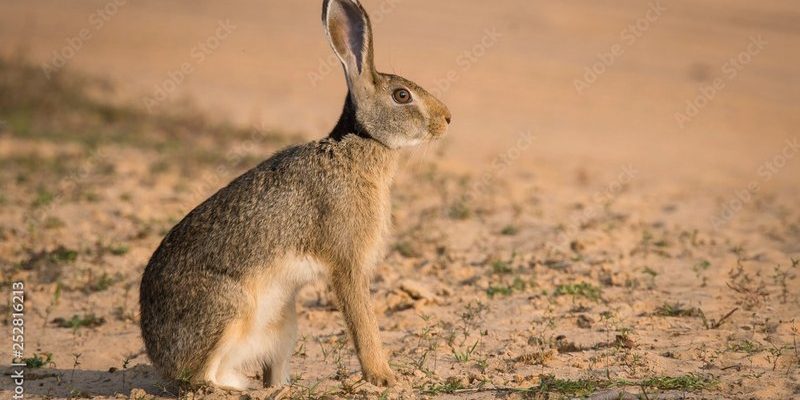
The Indian Hare is a fascinating creature that often goes unnoticed in the bustling wilds of India. With its long ears and nimble legs, this mammal has adapted to its surroundings in remarkable ways. Imagine a small, agile gymnast, effortlessly leaping through fields and forests—that’s pretty much how the Indian Hare moves. They’re not just cute; they also play a vital role in their ecosystem, acting as prey for a variety of predators while helping to maintain the balance in food chains.
What makes the Indian Hare particularly interesting is its unique behavior and lifestyle. You might picture hares as simple creatures, but they have intricate social structures and fascinating habits. They live in various habitats throughout India, from grasslands to scrub forests, and can even be found in agricultural areas. Much like our pets, they have specific dietary needs and social interactions that shape their daily lives. If you’re curious about these gentle animals, you’re in for a treat!
Physical Characteristics
The Indian Hare, scientifically known as Lepus nigricollis, has some standout physical traits that help it thrive in the wild. Typically, they have a slender body covered in a mix of brown, gray, and white fur, allowing them to blend into their surroundings seamlessly. Their long ears, which can reach up to 7 inches, are not just for show; they help them hear predators approaching from afar. Think of them as nature’s built-in listening devices!
They have powerful hind legs that enable them to sprint at speeds of up to 40 miles per hour. This agility is their best defense against predators like foxes, eagles, and even domestic dogs. When startled, Indian Hares can perform incredible leaps, making it difficult for predators to catch them. Their eyes are positioned on the sides of their heads, providing a wide field of vision, which is another advantage in the wild.
Size and Weight
On average, the Indian Hare measures about 18 to 25 inches in length, with a tail that adds another 4 to 5 inches. They usually weigh between 4 to 7 pounds, depending on their age and habitat. Young hares, known as leverets, are born with fur and open eyes, ready to hop around shortly after birth. This rapid development is crucial for surviving in the wild, where threats are always present. It’s like being given a crash course in survival right at the start!
Habitat and Distribution
The Indian Hare is primarily found in the Indian subcontinent, thriving in a variety of environments. They prefer open grasslands, scrub forests, and agricultural lands. This adaptability makes them quite common in many rural areas where they can find plenty of food. If you’ve ever taken a stroll through a field in India and spotted a quick movement, there’s a good chance it was an Indian Hare darting away to safety.
These hares are generally nocturnal, meaning they’re most active at dawn and dusk. This behavior helps them avoid daytime predators and gives them a better chance to forage for food. They often create nests in tall grasses or bushes, where they can hide from danger and raise their young. Imagine a cozy little hideaway where they can rest without a care in the world—now that’s a smart move!
Diet and Feeding Habits
When it comes to food, the Indian Hare has quite the appetite. They are herbivores and primarily feed on a diet of grasses, leaves, and vegetables. It’s interesting to note how they have adapted their eating habits based on the availability of food in their habitats. During the rainy season, when vegetation is lush, they indulge in a variety of green plants, while in the drier months, they rely on tougher, dried grasses.
This constant need for food means they spend a lot of time foraging. You might even find them nibbling on crops in agricultural areas, which can sometimes put them at odds with farmers. But here’s a fun fact: the Indian Hare has a unique way of digesting food. They practice coprophagy, which means they eat their own droppings to extract maximum nutrients from their food. Talk about recycling!
Behavior and Social Structure
In terms of behavior, the Indian Hare is a fascinating study in social structure. They are generally solitary creatures, but during the mating season, you might witness males competing for female attention in an interesting display of speed and agility. This behavior can be quite a spectacle to behold! Think of it as a natural version of a race, where the fastest hare wins the day.
While they are primarily solitary, Indian Hares can also form small groups, especially in areas where food is abundant. These groups provide some social interaction and can even offer protection against predators. Imagine living in a tight-knit community where everyone looks out for each other—this is how they navigate the potentially dangerous wild.
Reproduction and Lifespan
The mating season for Indian Hares typically occurs from January to September, with a peak during the monsoon months when food is plentiful. After mating, the female can give birth to a litter of 1 to 4 leverets after a gestation period of about 42 days. The young are remarkably independent, and within a few weeks, they’re ready to hop around on their own.
In terms of lifespan, Indian Hares can live up to 5 to 8 years in the wild, but they face many dangers that can shorten their lives, including predators and habitat loss. Just like in any natural setting, survival is a constant challenge. However, if they can evade dangers, they can thrive and adapt to their changing environment, just like the resilient creatures they are.
Conservation Status
Currently, the Indian Hare is not considered endangered, but they do face threats from habitat destruction, hunting, and agricultural activities. As urban areas expand and natural habitats are destroyed, these hares may find it increasingly difficult to survive. It’s a sad reality for many wild animals today. Conservation efforts are crucial for their future, and raising awareness about their importance in the ecosystem can make a significant impact.
Efforts to protect their habitats and promote coexistence with humans are vital. Simple actions, like planting native plants and reducing pesticide use in farming, can help create environments where Indian Hares can thrive. It’s a win-win situation—humans can enjoy the beauty of nature, while the hares get a safe place to live and breed.
Interesting Facts About Indian Hares
| Characteristic | Details |
|---|---|
| Scientific Name: | Lepus nigricollis |
| Size: | 18 to 25 inches long |
| Weight: | 4 to 7 pounds |
| Speed: | Up to 40 miles per hour |
| Habitat: | Grasslands, scrub forests, agricultural areas |
| Diet: | Grasses, leaves, vegetables |
| Lifespan: | 5 to 8 years in the wild |
FAQ
What is the difference between a hare and a rabbit?
While both hares and rabbits belong to the same family, they are different species with several distinctions. Hares are typically larger than rabbits and have longer hind legs and ears. Unlike rabbits, which often live in burrows, hares usually nest in simple depressions in the ground. This leads to differences in behavior; hares are often born with fur and open eyes, making them more independent right away, while rabbits are quite vulnerable at birth.
Are Indian Hares social animals?
Indian Hares are generally solitary creatures, but they can exhibit social behaviors during certain times, especially during the mating season. Male hares may compete for the attention of females, and in areas with abundant food, you can sometimes find them in small groups. They do not form lasting social bonds like some other animals, but they are aware of their surroundings and can adapt to being around others when necessary.
How do Indian Hares communicate?
Indian Hares primarily communicate through body language and vocalizations. They may thump their feet on the ground to signal danger or warn others of approaching predators. Additionally, they express emotions through posture and subtle movements. Not often vocal, when they do make sounds, it’s typically a soft grunt or whimper, which can indicate distress or discomfort.
What do Indian Hares eat in the wild?
Indian Hares are herbivores, and their diet mainly consists of grasses, leaves, and tender shoots. They are known to be opportunistic feeders, adapting their diet based on the season and availability of food. During the rainy season, they enjoy a variety of green vegetation, while in drier months, they rely on tougher grasses and shrubs. This dietary flexibility helps them survive in diverse habitats.
How fast can Indian Hares run?
Remarkably, Indian Hares can run at speeds of up to 40 miles per hour! This impressive speed is vital for evading predators in the wild. Their long hind legs and powerful muscles allow them to make quick, agile movements, which is often how they escape danger. Their speed and agility make them one of the fastest land animals in their environment.
Are Indian Hares active during the day or night?
Indian Hares are primarily nocturnal, meaning they are most active during the twilight hours of dawn and dusk. This behavior helps them avoid predators that hunt during the day. While they might occasionally be seen during daylight, they prefer the cover of night for foraging and socializing when the risk of being spotted is lower.
What is the breeding season for Indian Hares?
The breeding season for Indian Hares typically spans from January to September, with peak activity during the monsoon months. After a gestation period of around 42 days, females can give birth to a litter of 1 to 4 leverets. The young are born fully furred and with their eyes open, ready to start hopping around shortly after birth. This rapid development is essential for their survival in the wild.
How do Indian Hares contribute to their ecosystem?
Indian Hares play an important role in their ecosystem as prey for numerous predators, including birds of prey, foxes, and even larger mammals. By serving as a food source, they help maintain the balance in the food chain. Additionally, their grazing habits can influence the growth and health of vegetation in their habitats, contributing to the overall health of the ecosystem they inhabit.
Can Indian Hares be kept as pets?
While Indian Hares may seem cute and cuddly, they are wild animals and not typically suited for domestic life. They require a specific diet, ample space to roam, and social interaction that cannot be replicated in a home environment. Keeping a hare as a pet might seem appealing, but it’s essential to consider their natural behaviors and needs. Instead, you can enjoy observing them in their natural habitat or supporting conservation efforts.
What threats do Indian Hares face?
Indian Hares face several threats, including habitat loss due to urban development, agricultural expansion, and hunting. These factors can significantly impact their populations. Conservation efforts, like protecting their natural habitats and raising awareness about their importance in ecosystems, are crucial for ensuring their survival in the wild. By promoting coexistence and sustainable practices, we can help secure a better future for these incredible animals.

